CHASITY’S CHALLENGES: Chasity’s Arrival at LTR 3-30-20
With the empty stall and run next to Wrangler, we now had space to consider getting him a new companion. I checked with a friend in Oklahoma and we found Chasity! What a lovely “Lady!” My friend said she was a really FORWARD moving jennet with a lot of independence and enthusiasm. We thought she would be the perfect companion for Wrangler!

Chasity was delivered on 3-30-20 and the introductions began while she was in quarantine in a space where she could see Wrangler, but they could not reach each other.

They played with excitement back and forth along the fence line for a bit!

Then Wrangler had to come to me and tell me and Chad all about what a beautiful girl he had found! He was SO EXCITED!!!

Then Wrangler returned to the fence where they ran back and forth together for quite some time!

They were clearly VERY interested in each other! Love was in bloom!
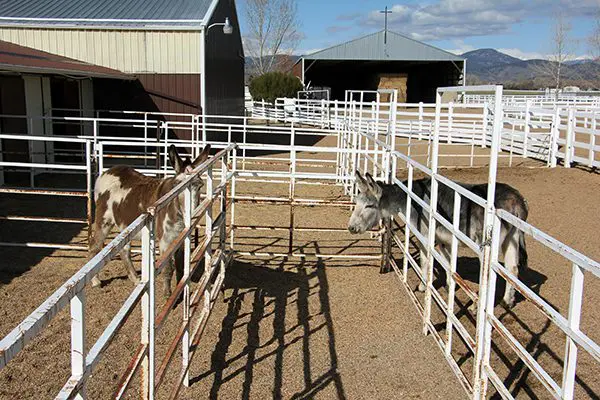
Chasity does have issues, but will be fed and maintained the same way we do with all of our equines. Many feeds can cause hypertension in Longears (and horses, too!) and an inability to focus for any length of time. Mules and donkeys require a lot less feed than horses because they are half donkey and donkeys are desert animals. Too much feed or the wrong kind of feed and you run the risk of skin irritations, abscesses, colic, or founder. The formula for our oats mix fed once a day with grass hay morning and evening is very simple and produces amazing results. Depending on the individual, we feed the average sized equines (13 hands to 17 hands) 1-1/2 to 2 cups of oats mixed with 1 oz. of Sho Glo by Manna Pro and 1 oz. of Mazola corn oil. Draft animals (over 17 hands) get twice as much and the minis get 1/4 (small minis under 36 inches) to 1/2 (36 to 48 inches) cup. We monitor weight gain and loss by decreasing and increasing the their hay intake and turnout time. A maximum of 2 cups of oats for an average sized animal (usually during the winter) is all they need. We give them oats as rewards from a fanny pack around our waist during their lessons when they actually need the added energy. The oats must be broken open in some way (crimped, steamed, rolled, etc.) as equines cannot digest whole oats. A neglected animal with coarse hair will show a drastic difference in the hair coat within four days. This feed and exercise program together will make a dramatic change in the overall body shape within six months!

If you alter or modify this regimen with other products, you will not get the same results. I make sure the equines have free access to a trace mineral salt blocks (red block) for their mineral needs. We worm with Ivermectin paste wormer in January, March, May, July and September and break the cycle with Strongid in November. When regular worming is done, the Ivermectin will kill tape worm larva, so they cease to be a problem. We vaccinate in the spring and give boosters in the fall. Consult your veterinarian to know the types of vaccines you will need for your specific area. I never feed Longears (donkeys, or mules, or even my horses) any pre-mixed sweet feeds, or excessive alfalfa products. I feed pelleted Sho Glo because it is such a small amount and provides adequate daily nutrition. Feeding larger amounts of dehydrated feeds and supplements can increase the risk of choking. You cannot add enough water to prevent them from sucking fluid from the digestive tract. Equines, and particularly pregnant equines, should not be turned out on Fescue grass. Our pastures are brome and orchard grass which seems best, although Timothy and Coastal hay are okay for Longears if this grass mix is no available. Pregnant equines we feed grass hay only from six weeks before foaling to six weeks after foaling after which their oats mix can be resumed. Chasity will be kept in quarantine with no direct interaction with the other equines for 30 days.

Then, she will be kept in a stall and run right next to Wrangler for evening feedings, overnight and for morning feedings for one week before they can go to turnout together in the same area. Feeding in a smaller, dry lot, or stall and run, and monitoring turnout has several benefits:
1) Each animal can easily be checked daily for any injuries or anomalies. It promotes bonding.
2) Each animal will not have to fight for his food, can sleep uninterrupted and be more calm and refreshed each day.
3) You can do turnout at specific times for grazing during the day, and bring them back easily each night because they will know their oats are waiting for them. When you feed the oats mix in the evenings, it makes it easier to call them back from shortened pasture time in the spring (they have to work into extended pasture time slowly and over several weeks).
4) You can monitor grazing intake so there will not be over-grazing. This minimizes the risk of colic, or founder (Longears should not be on pasture more than five hours a day, and only one hour a day for minis, starting with shorter periods of time in the spring).
4) The smaller area affords you a confined space for beginning training, so there is no need to chase or be interrupted by other animals.
5) Your animal will be more apt to come to you easily to be haltered after their morning feeding of grass hay for their lessons only when they know you have fanny pack full of oats for them. You should only need to call them from the gate and never play chase!
6) Having this definite routine lets your animal know what to expect and discourages adverse behaviors. If you are inconsistent and break the routine, the results will not be the same.
Chasity is a bit suspicious, awkward and unsure of things now, but we have no doubt about her easy adaptation to our program that will increase her confidence, promote good health as her postural core strength evolves and solidify her new habitual way of moving and resting.





















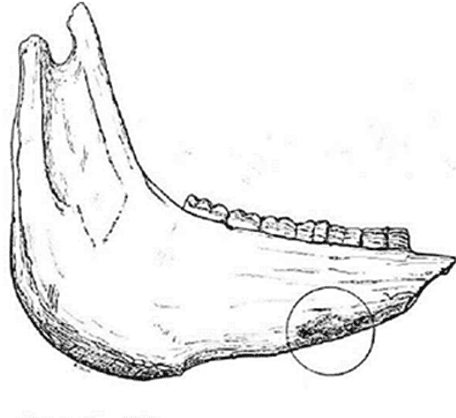


 The Roman fort at Weissenburg, called Biriciana in ancient times, is a former Roman Ala castellum, which is a UNESCO World Heritage Site located near the Upper Germanic-Rhaetian Limes.
The Roman fort at Weissenburg, called Biriciana in ancient times, is a former Roman Ala castellum, which is a UNESCO World Heritage Site located near the Upper Germanic-Rhaetian Limes. 








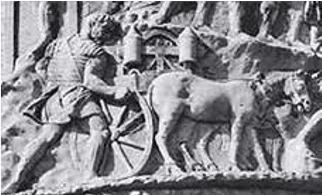



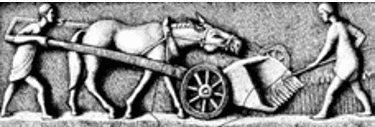































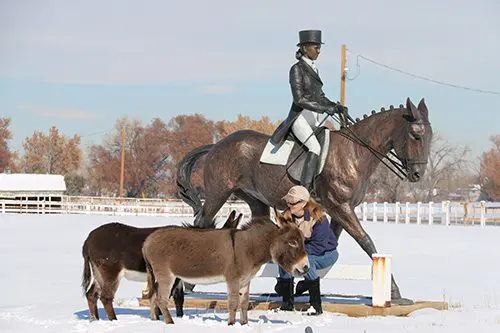





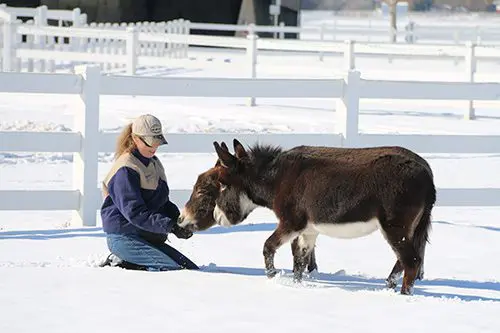


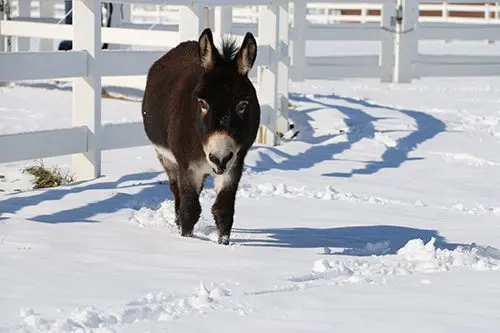





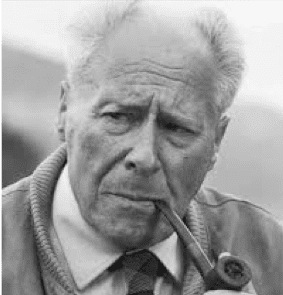 Pierre Bovier tied the rope around the iron bar that follows the wall; with the back of his hand he hit his mule on the back, as a sign of his friendship. He pulled a crackling piece of hay out of the oat sack, took his two cheeses under his arms and walked away. It was still winter up there, no relief was to be seen anywhere; dirty snow, half melted from the wind, covered the whole slope with a lifeless blanket. Perhaps the young grain’s stalks were already trembling beneath him. The grass sounded like the call of spring. The roots trembled in the frosty earth. Impatience ate the souls of the people. But the plain shone in the bright spring light. Pierre Bovier saw spring from his village Euseigne. Every day he watched for a long time the triangle of sap-laden earth between the sloping columns of the valley entrance. He would have loved to dig his working hands into the humid cold of the revived vines. He stretched his head, he looked and looked. Then he couldn’t stand it any longer. He could no longer stay in this house surrounded by death. He took his mule and he went away. So he went down to the valley and pulled his animal by the reins. The mule stretched his neck towards spring. Two small cheeses hung in the oat sack. He
Pierre Bovier tied the rope around the iron bar that follows the wall; with the back of his hand he hit his mule on the back, as a sign of his friendship. He pulled a crackling piece of hay out of the oat sack, took his two cheeses under his arms and walked away. It was still winter up there, no relief was to be seen anywhere; dirty snow, half melted from the wind, covered the whole slope with a lifeless blanket. Perhaps the young grain’s stalks were already trembling beneath him. The grass sounded like the call of spring. The roots trembled in the frosty earth. Impatience ate the souls of the people. But the plain shone in the bright spring light. Pierre Bovier saw spring from his village Euseigne. Every day he watched for a long time the triangle of sap-laden earth between the sloping columns of the valley entrance. He would have loved to dig his working hands into the humid cold of the revived vines. He stretched his head, he looked and looked. Then he couldn’t stand it any longer. He could no longer stay in this house surrounded by death. He took his mule and he went away. So he went down to the valley and pulled his animal by the reins. The mule stretched his neck towards spring. Two small cheeses hung in the oat sack. He  would sell this cheese, he would pay his debts to the bank. Two twenty-franc notes, a few glasses of wine to drink with one he meets in the bustling city before climbing back up to his village. This is our life. The reins are stretched, the mule hurries forward. Now Pierre Bovier is looking for a place in the city to put up his cheese. It is wonderfully warm. The sun makes its bright spots dance on the roadsides, the light stops on the groups of women, hangs on the yellow wicker baskets dangling from its arms. In the fishmonger’s display the sun delicately silvered the scales, sticking tinsel gold into the fur of the thick rabbits that are destined for the cooker. “What is the cheese?” “Twenty-five francs a piece.” The deal was closed, and Pierre Bovier walked straight to the bank, pulled out of his pocket a green, dirty envelope; paid. When he was back on the street he suddenly felt a strong thirst at the bottom of his throat and he decided, to satisfy it immediately.
would sell this cheese, he would pay his debts to the bank. Two twenty-franc notes, a few glasses of wine to drink with one he meets in the bustling city before climbing back up to his village. This is our life. The reins are stretched, the mule hurries forward. Now Pierre Bovier is looking for a place in the city to put up his cheese. It is wonderfully warm. The sun makes its bright spots dance on the roadsides, the light stops on the groups of women, hangs on the yellow wicker baskets dangling from its arms. In the fishmonger’s display the sun delicately silvered the scales, sticking tinsel gold into the fur of the thick rabbits that are destined for the cooker. “What is the cheese?” “Twenty-five francs a piece.” The deal was closed, and Pierre Bovier walked straight to the bank, pulled out of his pocket a green, dirty envelope; paid. When he was back on the street he suddenly felt a strong thirst at the bottom of his throat and he decided, to satisfy it immediately. It struck eleven o’clock. The landlady refused them the last half liter. So they had no choice but to leave. They rose and were outraged at this heartless creature, that had placed them in front of the door, stumbled between the tables, swayed down the street in all its width, finally trusted the walls, and when the walls stopped, they supported each other’s disturbed balance. They would have liked to drink another glass, equalize the other glasses. But all the doors were closed. So they had to do without, for better or for worse, and they did it by scolding the bad times. They decided to return home, the one from Ayent to Ayent and Pierre Bovier to Euseigne. “Where do you have your mule?” “There he is, next to yours.” The mules waited in the cool night. Swaying, the fathers (lads) gave each other their hands and then loosened their animals. It was no small thing for them to get on the saddle. After all, Ayent’s succeeded first, after some unsuccessful attempts. And the mule rode off with the hasty step of a hungry animal. Euseigne, for his part, managed to climb the animal after many attempts and violations of the second commandment. A lucky fool shortened the way home. Almost at the same time, the two companions felt their animals stop. We have arrived, said the mule’s frozen gestures. “Where am I,” stammered the one from Ayent, for he no longer knew his barn. “But I am in Ayent,” the one from Euseigne suddenly sobered. After they had confused the radical doctrine with the conservative, then their glasses, they had now also confused their mules. But the mules had not been wrong in their way home.
It struck eleven o’clock. The landlady refused them the last half liter. So they had no choice but to leave. They rose and were outraged at this heartless creature, that had placed them in front of the door, stumbled between the tables, swayed down the street in all its width, finally trusted the walls, and when the walls stopped, they supported each other’s disturbed balance. They would have liked to drink another glass, equalize the other glasses. But all the doors were closed. So they had to do without, for better or for worse, and they did it by scolding the bad times. They decided to return home, the one from Ayent to Ayent and Pierre Bovier to Euseigne. “Where do you have your mule?” “There he is, next to yours.” The mules waited in the cool night. Swaying, the fathers (lads) gave each other their hands and then loosened their animals. It was no small thing for them to get on the saddle. After all, Ayent’s succeeded first, after some unsuccessful attempts. And the mule rode off with the hasty step of a hungry animal. Euseigne, for his part, managed to climb the animal after many attempts and violations of the second commandment. A lucky fool shortened the way home. Almost at the same time, the two companions felt their animals stop. We have arrived, said the mule’s frozen gestures. “Where am I,” stammered the one from Ayent, for he no longer knew his barn. “But I am in Ayent,” the one from Euseigne suddenly sobered. After they had confused the radical doctrine with the conservative, then their glasses, they had now also confused their mules. But the mules had not been wrong in their way home.








 When I was growing up, my grandmother constantly reminded me of the importance of good manners. She would say, “You will never get anywhere of any consequence in this world without good manners!” And she would add, “Without good posture and proper dress, you won’t live long enough to enjoy it!” She made me read Emily Post’s Book of Etiquette from cover to cover. In retrospect, although reading the entire book was a real chore, the respect for good manners that she passed on to me has been an extremely valuable gem in my training experience with equines.
When I was growing up, my grandmother constantly reminded me of the importance of good manners. She would say, “You will never get anywhere of any consequence in this world without good manners!” And she would add, “Without good posture and proper dress, you won’t live long enough to enjoy it!” She made me read Emily Post’s Book of Etiquette from cover to cover. In retrospect, although reading the entire book was a real chore, the respect for good manners that she passed on to me has been an extremely valuable gem in my training experience with equines. I think that the concept of combining equine training techniques with lessons in good manners is one that many people do not pay as much attention to these days as they probably should. Putting an equine in good posture with respect to his physical comfort is the most obvious form of good manners when communicating with your equine. When you apply the elements of good manners during the training process, you facilitate body and verbal language that equines really appreciate, and when you apply your own good manners and teach good manners to your equine from the very beginning of the training process, you can continue to move forward much more easily than if you do not incorporate good manners between you and your equine. When you run into resistance from your equine, take it as a red flag that you’re missing something in your communication with your animal and change your approach.
I think that the concept of combining equine training techniques with lessons in good manners is one that many people do not pay as much attention to these days as they probably should. Putting an equine in good posture with respect to his physical comfort is the most obvious form of good manners when communicating with your equine. When you apply the elements of good manners during the training process, you facilitate body and verbal language that equines really appreciate, and when you apply your own good manners and teach good manners to your equine from the very beginning of the training process, you can continue to move forward much more easily than if you do not incorporate good manners between you and your equine. When you run into resistance from your equine, take it as a red flag that you’re missing something in your communication with your animal and change your approach. If your equine spends most of his time in the pasture, the good manners of promptness and reliability on your part are critical, as it is the only time you will have during the day to really spend time with him, and he’ll count on you to show up on time each day. What you’ll get out of being prompt at feeding times is a self-discipline that will carry over into everything that you do and will determine whether or not you are a reliable partner in the relationship with your equine. When you feed the oats mixture at night and none in the morning, it gives your equine a reason to come to you after breakfast when you offer oats to catch him, and gives him a reason to come back in off the pasture after being turned out for only a short time in the spring when pasture time needs to be limited. Doing something when it is convenient rather than considering the equine’s need for reliability in the trainer is a recipe for chaos and causes anxiety in both the equine and the trainer. However, having a predictable structure to your routine will allow both you and your equine to remain calm and clear in your communication with each other.
If your equine spends most of his time in the pasture, the good manners of promptness and reliability on your part are critical, as it is the only time you will have during the day to really spend time with him, and he’ll count on you to show up on time each day. What you’ll get out of being prompt at feeding times is a self-discipline that will carry over into everything that you do and will determine whether or not you are a reliable partner in the relationship with your equine. When you feed the oats mixture at night and none in the morning, it gives your equine a reason to come to you after breakfast when you offer oats to catch him, and gives him a reason to come back in off the pasture after being turned out for only a short time in the spring when pasture time needs to be limited. Doing something when it is convenient rather than considering the equine’s need for reliability in the trainer is a recipe for chaos and causes anxiety in both the equine and the trainer. However, having a predictable structure to your routine will allow both you and your equine to remain calm and clear in your communication with each other. If you want your equine to come to you, rather than chasing him, simply stand at the gate or doorway and ask him to come to you, offering the oats reward when he does. If you are kind, patient and consistent, he will most likely always oblige you.
If you want your equine to come to you, rather than chasing him, simply stand at the gate or doorway and ask him to come to you, offering the oats reward when he does. If you are kind, patient and consistent, he will most likely always oblige you.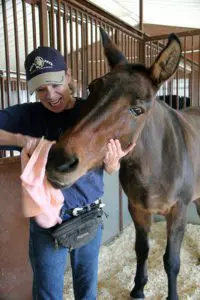 the others for standing back after you have rewarded the one you want for allowing you to halter him. This will also avoid anxiety in the one you are haltering, because he knows you will protect him and wave back the others who might otherwise crowd him or kick at him. The ones you wave back will learn that if they comply, a reward is coming.
the others for standing back after you have rewarded the one you want for allowing you to halter him. This will also avoid anxiety in the one you are haltering, because he knows you will protect him and wave back the others who might otherwise crowd him or kick at him. The ones you wave back will learn that if they comply, a reward is coming. Being in good posture feels good to all of us and allows all the organs in the body to work correctly. When one is comfortable and amply prepared for physical activity, it is always more enjoyable. This is no different for equines. When you don’t consistently pay attention to your own good posture, neither will your equine pay attention to his. His movements will tend to be difficult and unpleasant, and the relationship between the two of you may begin to erode. But when your equine is encouraged to be in good posture during training, it feels good to him and, over time, will become his normal way of moving and resting. He will also be grateful for your kindness and consideration, and he will look forward to the activities he gets to do and the time he spends with you. When you pay attention to your own good posture right from the beginning of leading training and every time you work with your equine, he will be able to mirror your good posture. The result will be his own good posture, which will result in more comfort for him.
Being in good posture feels good to all of us and allows all the organs in the body to work correctly. When one is comfortable and amply prepared for physical activity, it is always more enjoyable. This is no different for equines. When you don’t consistently pay attention to your own good posture, neither will your equine pay attention to his. His movements will tend to be difficult and unpleasant, and the relationship between the two of you may begin to erode. But when your equine is encouraged to be in good posture during training, it feels good to him and, over time, will become his normal way of moving and resting. He will also be grateful for your kindness and consideration, and he will look forward to the activities he gets to do and the time he spends with you. When you pay attention to your own good posture right from the beginning of leading training and every time you work with your equine, he will be able to mirror your good posture. The result will be his own good posture, which will result in more comfort for him. There will be times when it is necessary to employ negative reinforcement to stop bad behaviors that can escalate and become truly dangerous behaviors before they become persistent and uncontrollable. These corrections, which are covered in DVD #2 of my
There will be times when it is necessary to employ negative reinforcement to stop bad behaviors that can escalate and become truly dangerous behaviors before they become persistent and uncontrollable. These corrections, which are covered in DVD #2 of my 
 Today, we have more time to spend training our equines and cultivating our own riding skills. In most cases, the choice of tack is no longer of necessity, but of choice. Fashion, in any country, is supposed to be a statement of individuality and identity. The Western style of dress and tack suggests a hearty, rugged individual, surrounded by wide open spaces, using his equine as a partner for work. English attire paints a picture of dignity, reserve and concentrated skill. The Western image is a wonderfully romantic and picturesque way of seeing oneself, but it really doesn’t allow us the opportunity to improve our equestrian skills to the maximum. Western style riding is as limited as its uses. The smaller English saddle, made with a lot less leather, allows us to feel our equine’s body more closely (with the added stability of the stirrups) while we learn and exercise our bodies to become more harmonious with our mounts. As we can feel our equine more closely, so can he feel better the cues that we to give him. Thus, he can respond more accurately to our commands. However, most men don’t feel comfortable wearing “Sissy Pants” and riding in a “Sissy Saddle”—it just isn’t macho!
Today, we have more time to spend training our equines and cultivating our own riding skills. In most cases, the choice of tack is no longer of necessity, but of choice. Fashion, in any country, is supposed to be a statement of individuality and identity. The Western style of dress and tack suggests a hearty, rugged individual, surrounded by wide open spaces, using his equine as a partner for work. English attire paints a picture of dignity, reserve and concentrated skill. The Western image is a wonderfully romantic and picturesque way of seeing oneself, but it really doesn’t allow us the opportunity to improve our equestrian skills to the maximum. Western style riding is as limited as its uses. The smaller English saddle, made with a lot less leather, allows us to feel our equine’s body more closely (with the added stability of the stirrups) while we learn and exercise our bodies to become more harmonious with our mounts. As we can feel our equine more closely, so can he feel better the cues that we to give him. Thus, he can respond more accurately to our commands. However, most men don’t feel comfortable wearing “Sissy Pants” and riding in a “Sissy Saddle”—it just isn’t macho! One Saturday morning, I finished a lesson with one of my students when Gary strolled into the indoor arena and announced that he was willing to give the English saddle a try, but that we would never get him into a pair of those “Sissy Pants!” “Fair enough,” I said, and brought my student’s horse around for him to ride. Getting on was a bit of a struggle, and exercises at the walk went really well, but as soon as the horse began to trot, Gary started bouncing. He was about to lose his balance, so he grabbed the rail to steady himself. The only problem was the rail stayed where it was and the horse kept going, leaving Gary dangling behind on the fence! I thought we would never stop laughing – he looked so ridiculous! Our macho man didn’t have the balance he thought he had!
One Saturday morning, I finished a lesson with one of my students when Gary strolled into the indoor arena and announced that he was willing to give the English saddle a try, but that we would never get him into a pair of those “Sissy Pants!” “Fair enough,” I said, and brought my student’s horse around for him to ride. Getting on was a bit of a struggle, and exercises at the walk went really well, but as soon as the horse began to trot, Gary started bouncing. He was about to lose his balance, so he grabbed the rail to steady himself. The only problem was the rail stayed where it was and the horse kept going, leaving Gary dangling behind on the fence! I thought we would never stop laughing – he looked so ridiculous! Our macho man didn’t have the balance he thought he had! After a while Gary decided that English riding was, in fact, the best way to train. However, he still wasn’t too interested in “watching cement set” or doing Dressage tests. We decided after two years to start showing in Combined Training with the horses. We signed up for the second day of a two-phase show, not realizing that we would be asked to ride our Dressage tests the same day that we jumped. Two days before the show, Gary discovered that he would have to ride Training Level Test 1 at 9:00 A.M. the day of the show. We reviewed the test the day before the show, thinking that if all else failed I could read the test to him when he rode. Sunday morning, Gary was feeling tired, but confident. I took my place at “B” and prepared to read for him when the announcer explained that only United States Dressage Federation tests could have a reader, but not the same in Combined Training. Gary’s face turned ashen. I climbed back into the stands as he warmed up for his test… at the walk… lost in space! He stopped short below me and quietly said, “Meredith, will you please come here.” I ran down to see what the trouble was. “I can’t remember anything… I can’t do this!” he worried emphatically. I quickly explained the pattern. Gary’s first Dressage test ever in his first Combined Training show and he emerged in third place with a mule in the Elementary Division against 8 horses. Was he ever thrilled!
After a while Gary decided that English riding was, in fact, the best way to train. However, he still wasn’t too interested in “watching cement set” or doing Dressage tests. We decided after two years to start showing in Combined Training with the horses. We signed up for the second day of a two-phase show, not realizing that we would be asked to ride our Dressage tests the same day that we jumped. Two days before the show, Gary discovered that he would have to ride Training Level Test 1 at 9:00 A.M. the day of the show. We reviewed the test the day before the show, thinking that if all else failed I could read the test to him when he rode. Sunday morning, Gary was feeling tired, but confident. I took my place at “B” and prepared to read for him when the announcer explained that only United States Dressage Federation tests could have a reader, but not the same in Combined Training. Gary’s face turned ashen. I climbed back into the stands as he warmed up for his test… at the walk… lost in space! He stopped short below me and quietly said, “Meredith, will you please come here.” I ran down to see what the trouble was. “I can’t remember anything… I can’t do this!” he worried emphatically. I quickly explained the pattern. Gary’s first Dressage test ever in his first Combined Training show and he emerged in third place with a mule in the Elementary Division against 8 horses. Was he ever thrilled!